I’ve been a plate wall fan my entire life.
I especially love the freedom a random plate wall allows.
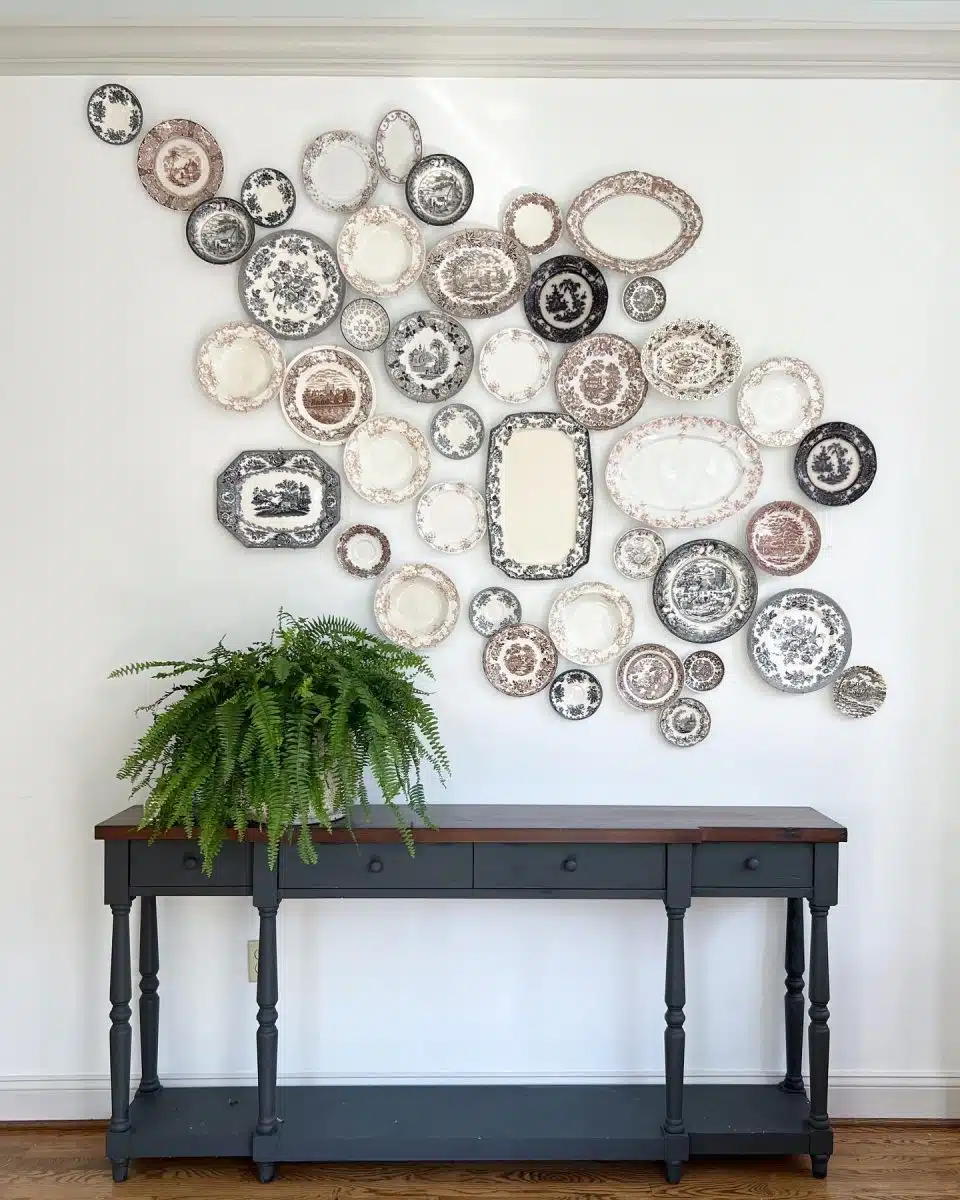
You can change it up over time if you find a new piece at a garage sale or just want to add in a new color or pattern or style.
A random wall is fluid, somewhat forgiving and doesn’t require you to have pairs of the same type of dishes.
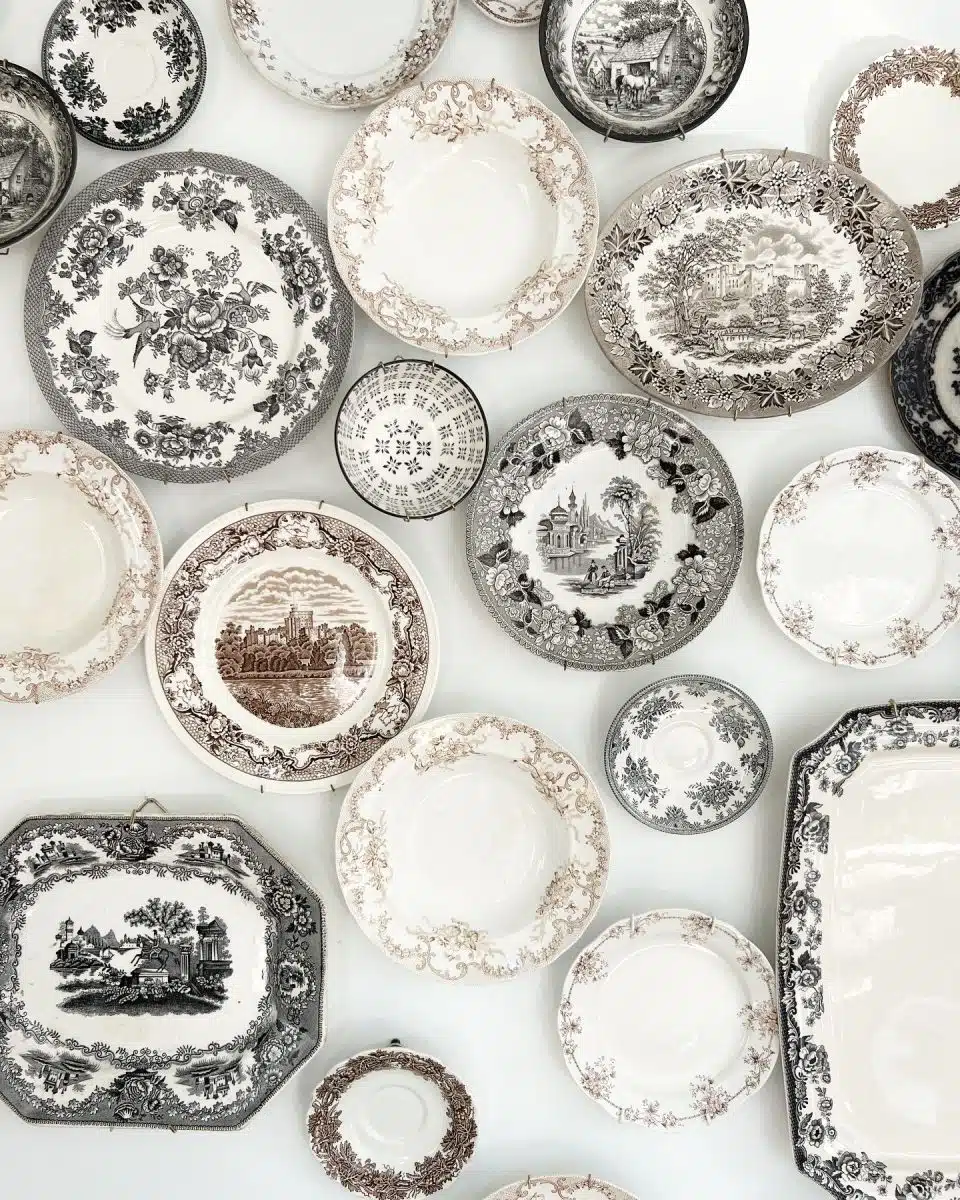
My favorite part is that it looks lighthearted, whimsical and unexpected, and can be shaped to fit any space on the wall.
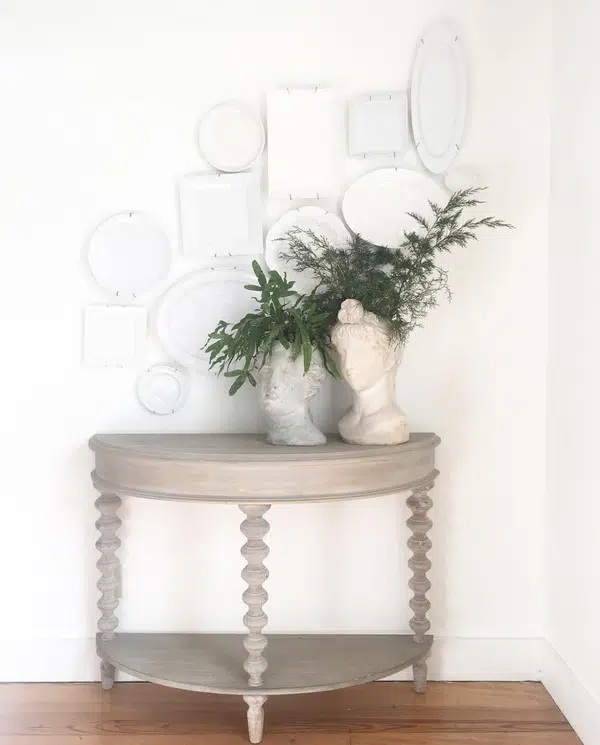
After twenty five years of creating some lovely and some weird plate walls, I thought I’d share what has and hasn’t worked to create a plate wall with interesting movement.
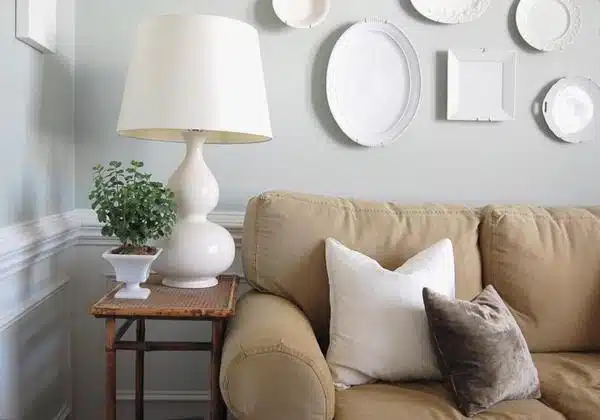
1. Hang Your Plates Close Together
I made this mistake at first. Each plate had entirely too much personal space and looked like it had a restraining order against the other plates. I now err on too close–even overlapping, rather than too far apart.
Listen, I’m not saying it’s wrong or ugly to hang your plates further apart, I’m just saying it’s not the layered, river-o-plates-look that I’m after for my walls.
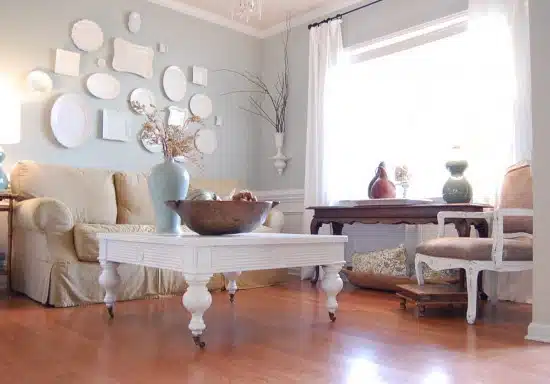
2. Place the Majority of the Larger Pieces on the Bottom Half
If I could go back to the room below, I’d move that highest large platter on the top left down into the bottom half of the display. You want your largest items to mostly live on the bottom half of the grouping so it doesn’t feel top heavy and like it’s going to topple over.
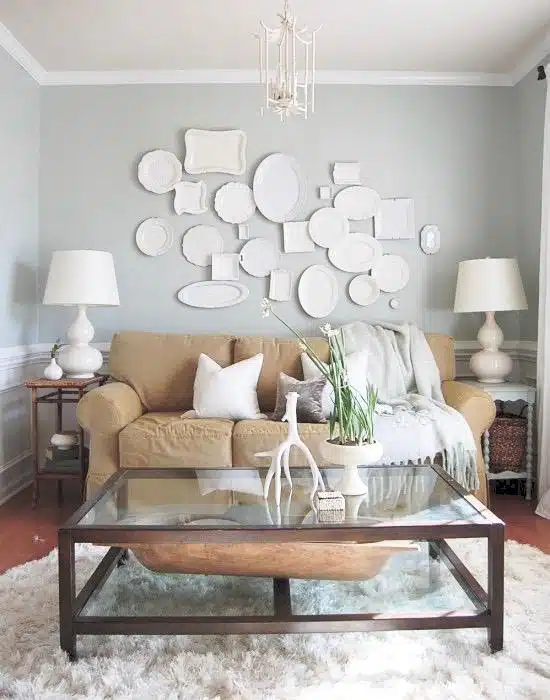
3. Use More Dishes and Platters
Wall art is in a relationship with what it’s hanging over. You want your plate wall to visually fill about 2/3rds the space of what it’s hanging above. If your plate wall has lots of empty space, you’ll tend to go further out to visually fill up the same amount of wall because something will seem off to you (all that empty space) and our natural tendency is to fill it up.
Instead of going out further, keep it tighter but add in more pieces either by filling in the gaps, or simply starting fresh.
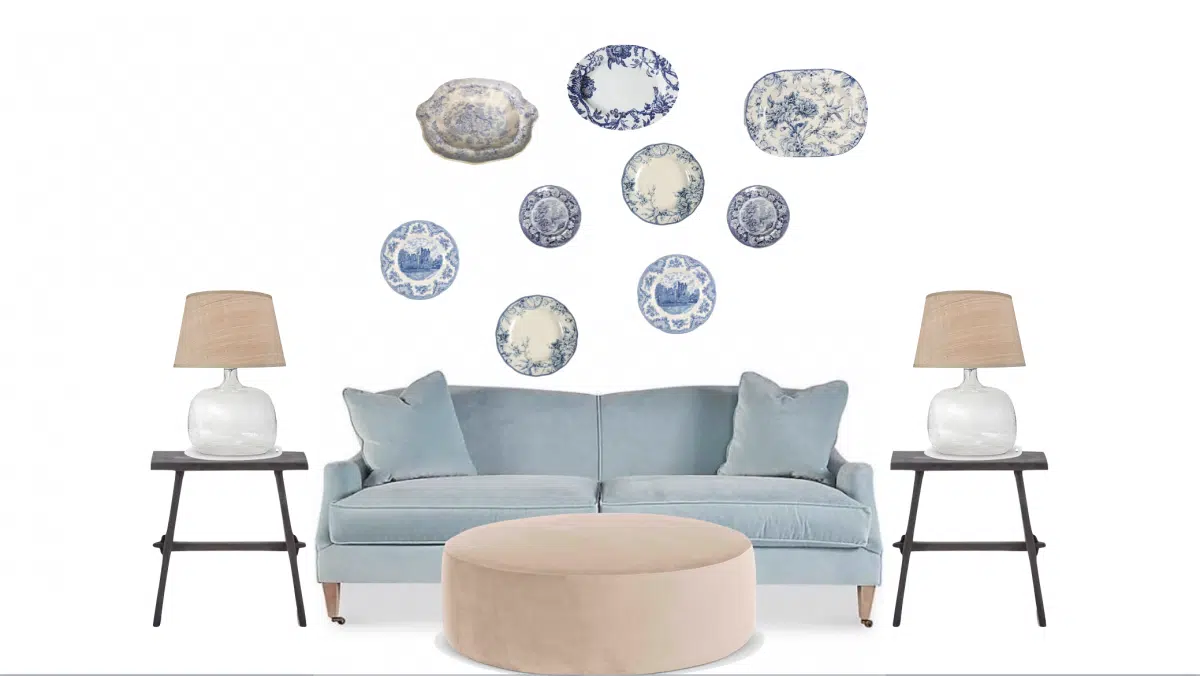
Above: This random plate wall is a great start but looks incomplete.
The plates are top heavy and spaced too far apart and the extra space makes it look unfinished and disjointed.
Ideally, you want the majority of the larger plates at the bottom half of the display for balance.
It needs more plates added to fill in the gaps, or, the plates need to be moved closer together.
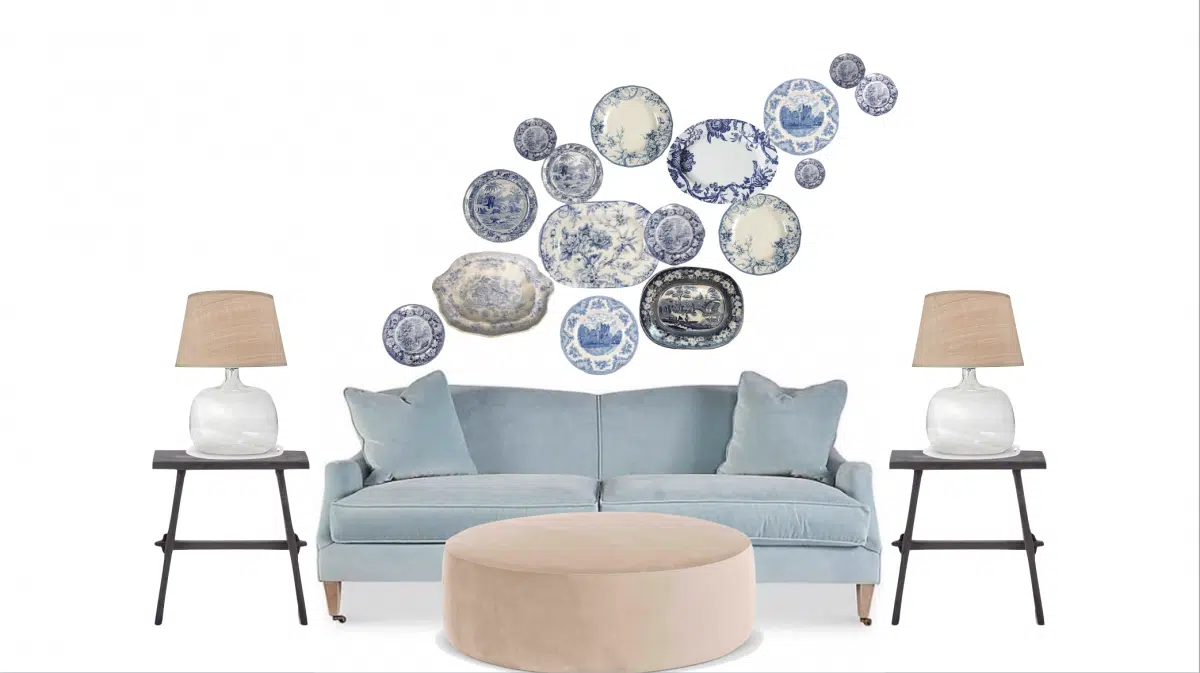
Above: The display is anchored with the majority of the larger platters on the bottom half, and the plates are moved closer, layered with extras added in to create a full, lighthearted display that fills the wall and moves up and to the right.
Next, we have a symmetrical display that feels incomplete and like it’s floating away from the sofa:
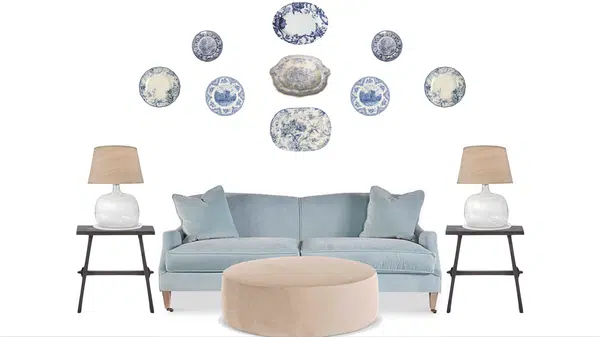
To remedy this, pull all the plates down so they are in relationship with the sofa and hang them closer together so they read as one display, instead of nine individual plates hanging on the wall.
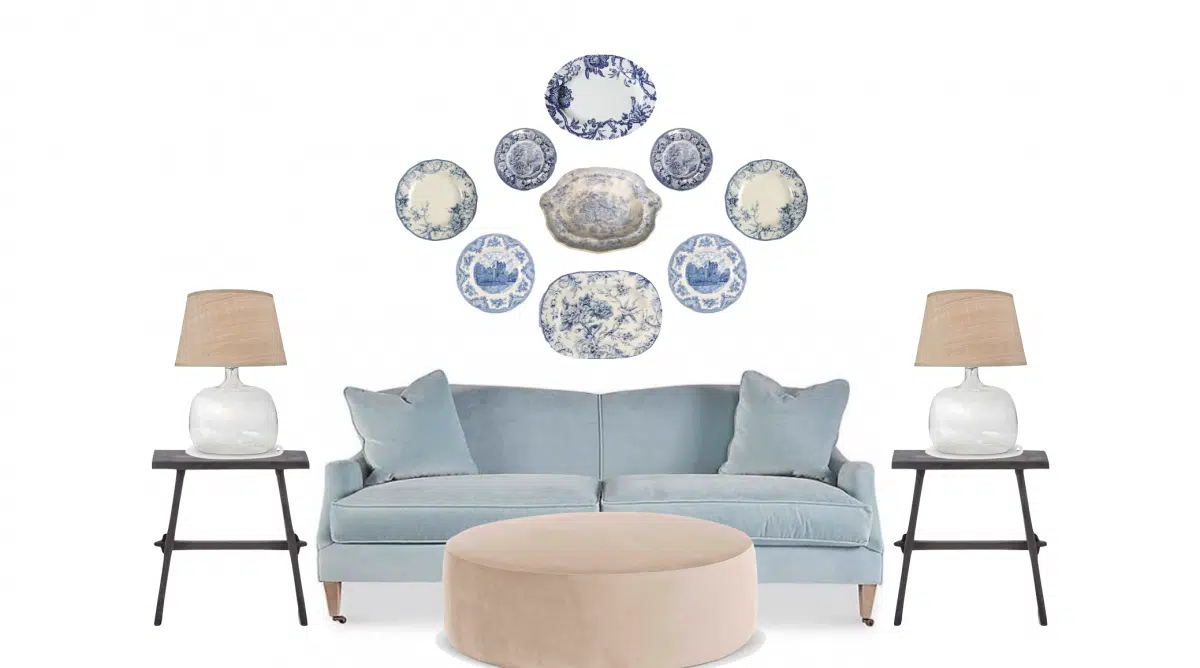
Above: A symmetrical plate wall that feels balanced and is in a great relationship with the sofa.
As far as hanging tips, there aren’t a lot other than being willing to have extra nail holes.
I start by choosing the overall shape of the grouping–usually a diagonal swoosh up to the right or left.
Once I know which direction I’m going, I’ll hang my favorite large piece in the middle and then work my way up and out and down and out on the other side.
I usually start with thumbtacks and only upgrade to stronger fatter nails if a dish requires something bigger.
I want some plates to be overlapping and most, but not all, to appear to be touching–think gears in a clock.
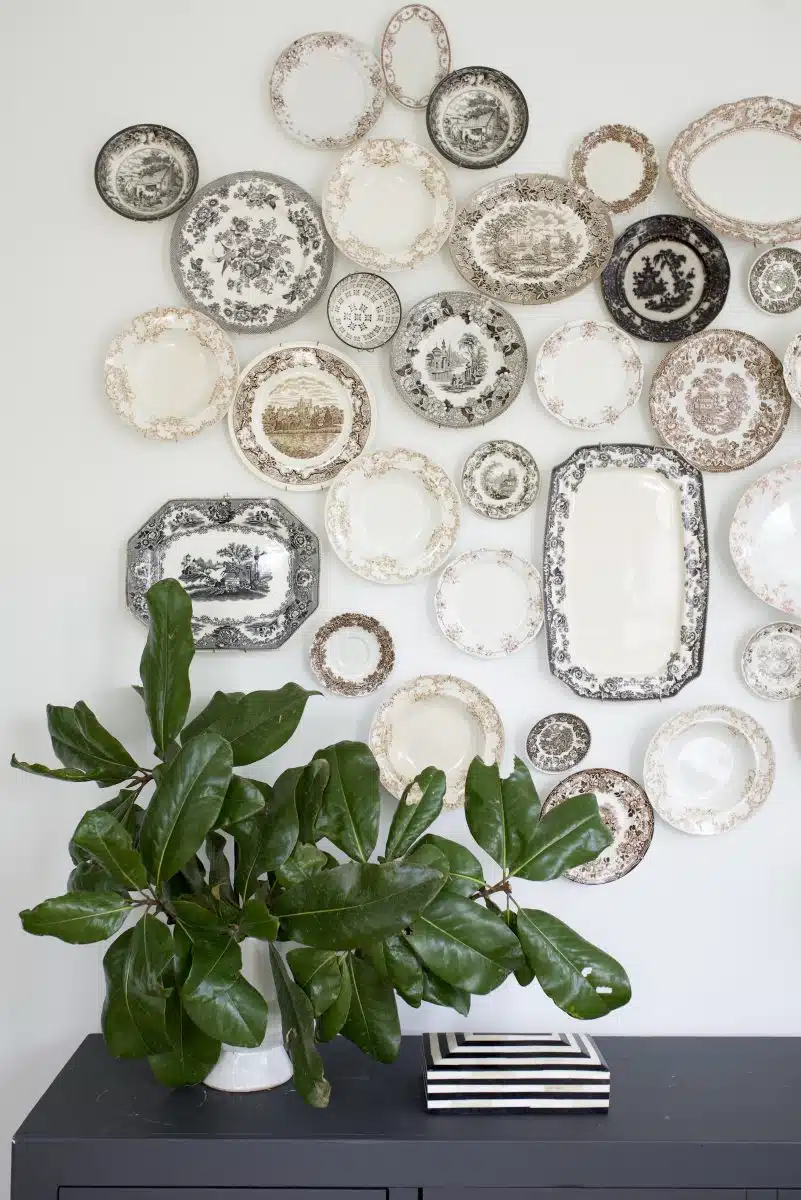
I think it’s fun to just eyeball it all and if a plate needs to be moved a few inches, I just make a fresh hole. No big deal.
Once I know I’m completely done (weeks or months later after I’ve tweaked it and lived with it) I’ll go back and fill any extra holes. It takes mere minutes.
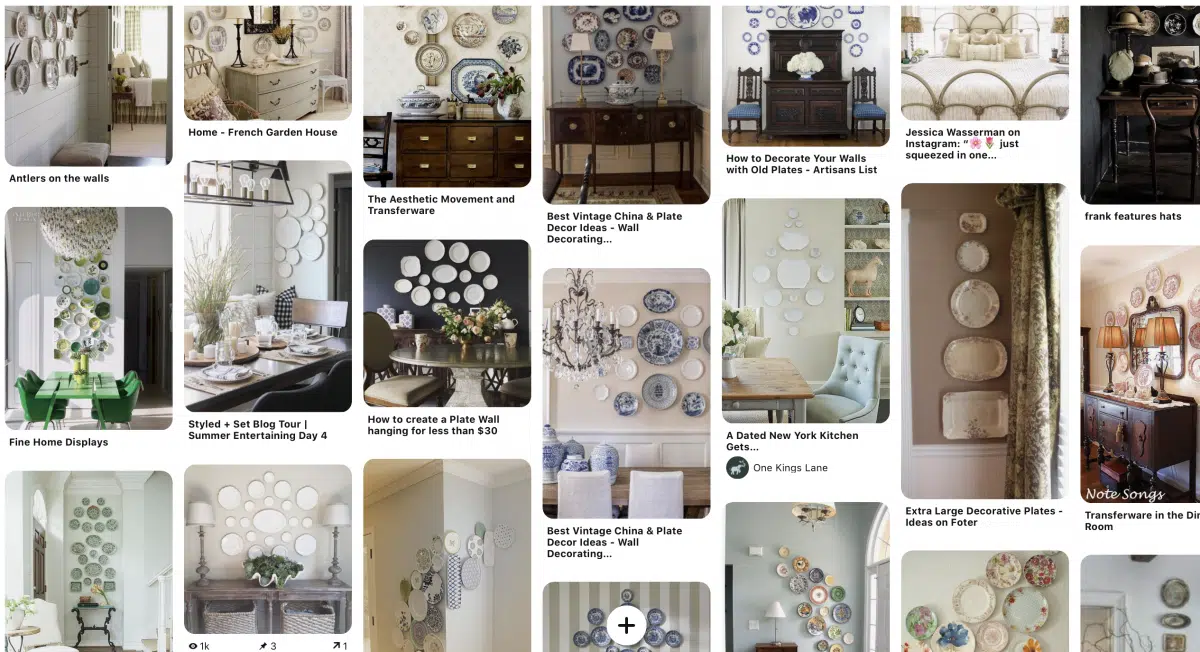
Also, to have a cohesive look you’ll want your dishes to have something in common. Maybe you’ll use all white, all bright florals, all neutral transferware, all blue and whites.
I prefer to have variations of tones–so instead of an entire set of blue willow from the same year, maybe mix in some new, some old, some chipped, some different shapes.
Here’s what I use to hang plates along with four other inexpensive items I use in our home.
Lastly, my favorite places to find plates and platters:
- Shop your house, your mom’s house and your grandmother’s house
- Yard sales, thrift stores and antique malls
- Etsy and Ebay
If you create a random plate wall, email me a photo or tag me on Instagram so I can see it and clap for you!